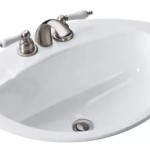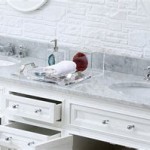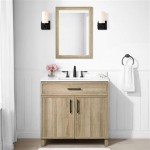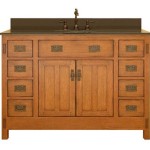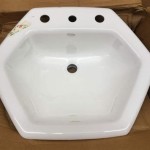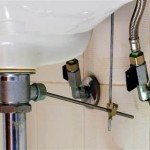Bathroom Sinks in Las Vegas: A Comprehensive Guide
The bathroom sink is a fundamental element of any bathroom design, impacting both functionality and aesthetics. In Las Vegas, Nevada, the options for bathroom sinks are as diverse as the city itself, ranging from sleek, modern designs to classic, timeless styles. Understanding the different types of sinks available, their installation requirements, and the factors influencing their cost is crucial for homeowners and contractors alike.
This article provides a comprehensive overview of bathroom sinks in Las Vegas, covering the various types, materials, installation considerations, and price points to assist in making informed decisions during bathroom renovations or new construction projects. It aims to equip readers with the knowledge necessary to select a sink that meets their specific needs and design preferences while staying within budget.
Types of Bathroom Sinks Available in Las Vegas
The market offers a wide variety of bathroom sink types, each with unique characteristics and suitability for different bathroom layouts and design styles. These include, but are not limited to, undermount sinks, vessel sinks, pedestal sinks, wall-mounted sinks, console sinks, and integral sinks. Understanding the features and benefits of each type is paramount in selecting the appropriate sink for a specific application.
Undermount Sinks: Undermount sinks are installed beneath the countertop, creating a seamless transition between the sink and the countertop surface. This design facilitates easy cleaning as there is no rim to trap debris or water. Undermount sinks are commonly paired with solid surface countertops like granite, quartz, or marble, as the edge of the countertop is exposed and contributes to the overall aesthetic. Their clean lines and minimalist appearance make them a popular choice for modern bathrooms. The installation process typically requires professional assistance to ensure a watertight seal and proper alignment.
Vessel Sinks: Vessel sinks, also known as above-counter sinks, sit on top of the countertop, resembling a decorative bowl. This type of sink adds a unique visual element to the bathroom and can be found in various shapes, sizes, and materials, including glass, ceramic, stone, and metal. Vessel sinks require a specific type of faucet, usually a tall vessel faucet or a wall-mounted faucet, to accommodate their height. Installation is relatively straightforward, but ensuring proper drainage and stability is essential. Vessel sinks are often chosen for their artistic appeal and ability to make a statement in the bathroom.
Pedestal Sinks: Pedestal sinks consist of a basin supported by a freestanding pedestal base. They offer a classic and space-saving design, making them suitable for smaller bathrooms or powder rooms. Pedestal sinks conceal the plumbing underneath the basin, providing a clean and streamlined appearance. However, they lack built-in storage, which may be a drawback for some users. Installation involves securing the pedestal to the floor and connecting the plumbing, typically requiring professional expertise.
Wall-Mounted Sinks: Wall-mounted sinks are attached directly to the wall, freeing up floor space and creating a minimalist aesthetic. They are ideal for bathrooms with limited space or for achieving a modern, open look. Wall-mounted sinks offer adjustable height, making them accessible for users of different heights. However, they require adequate wall support to handle the weight of the sink and the water. Installation typically involves reinforcing the wall studs to ensure stability and proper plumbing connections. Wall-mounted sinks are often paired with exposed plumbing or a decorative bottle trap for added visual interest.
Console Sinks: Console sinks combine the features of a wall-mounted sink and a pedestal sink. They consist of a basin supported by legs or a frame, providing a more substantial and decorative appearance. Console sinks often offer a shelf or storage space beneath the basin, adding functionality to the design. They are available in various styles, from traditional to contemporary, and can be customized with different leg finishes and countertop materials. Installation requires securing the legs to the floor and connecting the plumbing, ensuring stability and proper drainage.
Integral Sinks: Integral sinks are seamlessly integrated into the countertop, creating a single, continuous surface. This design eliminates the need for a separate sink basin and countertop, resulting in a clean and modern look. Integral sinks are commonly made from materials like solid surface, acrylic, or cultured marble. They offer easy cleaning and a smooth, non-porous surface. Installation involves installing the entire countertop and sink unit as a single piece, requiring precise measurements and professional expertise.
Materials Used in Bathroom Sink Construction
The materials used in the construction of bathroom sinks significantly impact their durability, aesthetics, and maintenance requirements. Common materials include vitreous china, porcelain, ceramic, glass, stone, stainless steel, and composite materials. Each material possesses unique characteristics that cater to different design preferences and performance expectations.
Vitreous China: Vitreous china is a ceramic material that has been coated with enamel and fired at high temperatures to create a durable, non-porous surface. It is resistant to staining, scratching, and chipping, making it a popular choice for bathroom sinks. Vitreous china sinks are easy to clean and maintain, and they come in a wide range of colors and styles. However, they can be susceptible to cracking if subjected to sudden temperature changes or impact.
Porcelain: Porcelain is a type of ceramic that is denser and less porous than vitreous china. It is highly durable and resistant to staining, scratching, and fading. Porcelain sinks are often used in high-traffic bathrooms due to their long-lasting performance. They are available in various finishes, including glossy and matte, and can be molded into intricate shapes and designs. However, porcelain sinks can be more expensive than vitreous china sinks.
Ceramic: Ceramic sinks are made from clay that has been fired at high temperatures to create a hard, durable surface. They are available in a wide range of colors, shapes, and sizes, making them a versatile choice for bathroom design. Ceramic sinks are relatively easy to clean and maintain, but they can be susceptible to chipping or cracking if subjected to impact. The quality of ceramic sinks can vary depending on the firing process and the quality of the clay used.
Glass: Glass sinks add a unique and contemporary touch to the bathroom. They are available in various colors, textures, and shapes, offering a wide range of design possibilities. Glass sinks are typically made from tempered glass, which is more durable and resistant to shattering than regular glass. However, they can be more prone to scratching and water spots than other materials. Regular cleaning is essential to maintain the clarity and shine of glass sinks.
Stone: Stone sinks, such as granite, marble, and travertine, offer a natural and luxurious aesthetic. They are highly durable and resistant to heat and staining, but they can be porous and require regular sealing to prevent water damage. Stone sinks are available in various colors and patterns, adding a unique and organic element to the bathroom. However, they can be more expensive than other materials and require specialized cleaning products.
Stainless Steel: Stainless steel sinks are known for their durability, resistance to corrosion, and modern appearance. They are commonly used in commercial bathrooms due to their hygienic properties and ease of maintenance. Stainless steel sinks are available in various gauges and finishes, ranging from brushed to polished. However, they can be prone to scratching and water spots, and they may require regular cleaning to maintain their shine.
Composite Materials: Composite sinks are made from a combination of materials, such as acrylic, resin, and mineral fillers. They offer a wide range of colors, textures, and designs, and they can be molded into seamless shapes. Composite sinks are durable, non-porous, and resistant to staining and scratching. They are also relatively lightweight and easy to install. However, the quality of composite sinks can vary depending on the specific composition of the material.
Factors Influencing the Cost of Bathroom Sinks in Las Vegas
The cost of bathroom sinks in Las Vegas is influenced by several factors, including the type of sink, the material used, the brand name, the size and shape, and the installation requirements. Understanding these factors can help in budgeting for a bathroom renovation or new construction project.
Type of Sink: The type of sink significantly impacts the overall cost. Undermount sinks and vessel sinks tend to be more expensive than pedestal sinks or wall-mounted sinks due to their more complex installation and aesthetic appeal. Integral sinks, which combine the sink and countertop into a single unit, can also be more costly due to the specialized manufacturing process.
Material: The material used in the construction of the sink also plays a significant role in determining the price. Stone sinks, such as granite or marble, are generally more expensive than vitreous china or ceramic sinks due to the higher cost of the raw materials and the specialized fabrication process. Stainless steel sinks and composite sinks can vary in price depending on the gauge and composition of the material.
Brand Name: Established brands often command higher prices due to their reputation for quality, durability, and design. Purchasing a sink from a well-known brand can provide assurance of performance and longevity, but it may also come with a higher price tag. Off-brand or generic sinks may be more affordable but may not offer the same level of quality or warranty protection.
Size and Shape: Larger sinks and sinks with intricate shapes or designs tend to be more expensive than smaller, simpler sinks. The size of the sink impacts the amount of material required for construction, while the shape and design affect the complexity of the manufacturing process. Custom-designed sinks or sinks with unique features can also command a premium price.
Installation Requirements: Complex installations, such as those involving custom plumbing or structural modifications, can increase the overall cost of the project. Hiring a professional plumber to install the sink can add to the expense, but it ensures proper installation and compliance with local building codes. DIY installations may save on labor costs but can result in costly mistakes if not performed correctly.

Beautiful Sinks In Main Bathroom Downstairs Picture Of Paris Las Vegas Paradise Tripadvisor

Floral Sinks In Paris Las Vegas Sink

Bathrooms Hand Painted Floral Sinks Traditional Bathroom Las Vegas By Decorated Llc Houzz

Bathrooms With Flowered Sinks Eclectic Powder Room Las Vegas By Decorated Bathroom Llc Houzz
Vortens Sinks Bathroom Phoenix Scottsdale Mesa Surprise Flagstaff Las Vegas

Beautiful Hotel Bathrooms Google Search Paris Las Vegas Ballys

Double Bathroom Sinks Picture Of Mandalay Bay Resort Las Vegas Tripadvisor

Bellagio Bathroom Sink Toilet Wheelchair Travel

Bathroom Vessel Sinks Copper Glass Natural Stone

Ove Decors Vegas 42 In W X 19 D 34 H Single Sink Bath Vanity Dark Charcoal With White Engineered Stone Top 15vva Char42 03 The Home Depot
Related Posts
